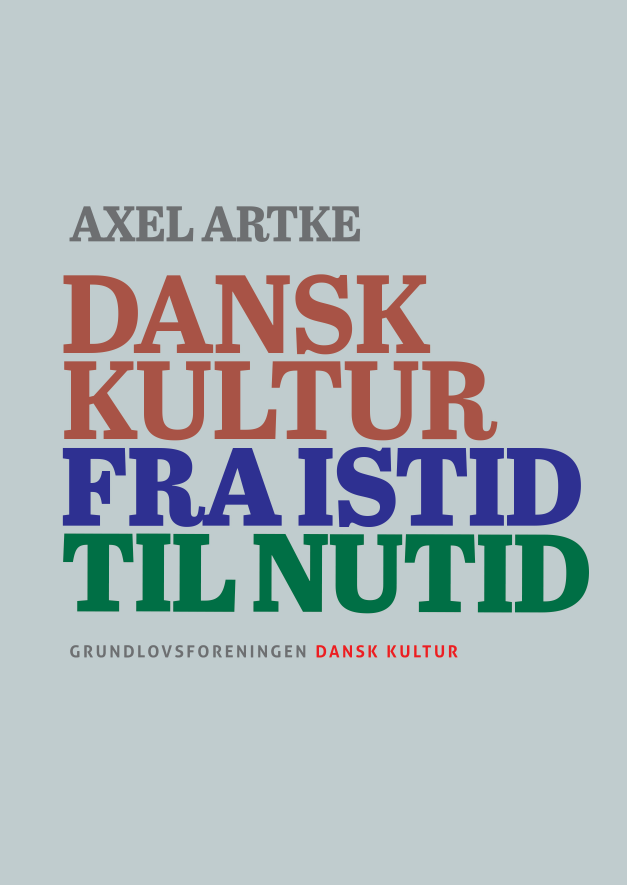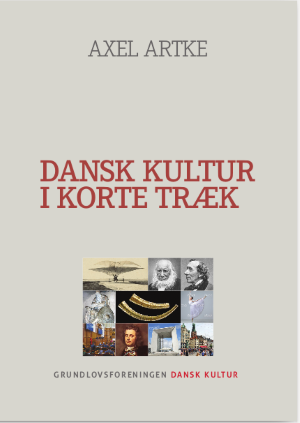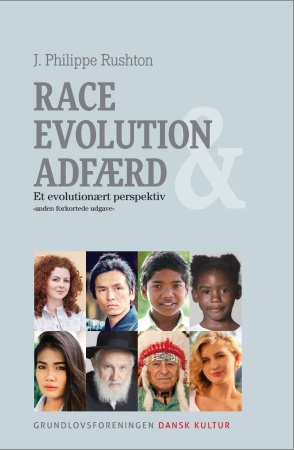Christopher Caldwell a is a senior editor at The Weekly Standard. He is a regular contributor to the Financial Times and Slate. His essays and reviews appear in the New York Times, the Wall Street Journal, and the Washington Post.
Meget indsigtsfuld indføring af Christoffer Caldwell – jeg lægger hele artiken da Weekly Standard links er inaktive efter en uge. En ellers overset pointe trækkes frem: socialdemokraternes Million Projekt – masseopførelsen af lejlighedskomplekser til svenskere der hellere ville bo i parcelhuse, efterlod i ti tusindvis af tomme, sjælløse kvarterer der stod som bygede for immigranter.En dansk arkitekt sagde fornylig: “Tyske og svenske bykerner ligner hinanden, de tyske fordi de blev bombet væk fra landkortet, de svenske fordi “samfundsbyggerne” gik i gang i 50 erne.(PS: Man noterer sig samfundsingeniørkunsten stadig har sin repræsentant i en tiltel: “Samhällbygnadsminister Mona Sahlin- Hendes kontroversielle opfindelse, Massoud Kamali, figurerer også i artiklen).Mauricio Rojas er interessant, men taler som sit Folkeparti altid med to tunger)
A Swedish Dilemma
Immigration and the welfare state. by Christopher Caldwell Malmö, Sweden
“EVERYONE is welcome here,” says Bejzat Becirov to a non-Muslim visitor. Becirov runs the Islamic Center of Malmö, on the outskirts of Sweden’s third-largest city. When Becirov immigrated from his native Macedonia in 1962, Swedes used to say that kind of thing, too. But in the last two decades, Malmö has acquired a population that is almost 40 percent foreign. Most of the students in its public schools are of foreign parentage. Some immigrant neighborhoods in the city have (official) unemployment rates exceeding 50 percent.
Malmö’s mayor, Ilmar Reepalu, has pleaded for immigrants to be settled in other parts of Sweden. This has made Reepalu popular in Malmö, but not in those other parts of Sweden.Others uneasy about immigration are too impatient to work through official channels. Much of the Islamic Center was destroyed by a fire of suspicious origin in 2003. Becirov founded the center in 1964. The squat mosque, recently renovated, with two minarets, was built in 1984. That makes it among the oldest of the hundreds of mosques that now dot Scandinavia.
This is a place that can raise great hopes or great worries, depending on how one views it. The center has a bustling school of a dozen classrooms. Becirov is an avuncular and open-hearted man, and the hundreds of students at the school dote on him. They run up and hug him, they tell him jokes. The teachers are dedicated, mostly native Swedes, who are teaching the children both Swedish and English. There is also a teacher of Arabic and the Koran. There is a clinic that treats sick kids, circumcises baby boys, and gives psychiatric counseling to war-traumatized children.
The center is on the edge of Rosengård, an archipelago of housing projects southeast of Malmö. It is one of the poorest, most transient, and welfare-dependent neighborhoods in Sweden. Swedish authorities have failed to lift up the area, and seem to be giving the Islamic Center of Malmö a great deal of leeway in attempting to do so. An article that appeared in 2003 noted that “a few” of the 6-to 10-year-old girls were wearing headscarves. On a visit in January 2005, fully 80 percent were covered in class–only a handful were not.
MALMÖ IS THE CITY IN SWEDEN most touched by immigration–but it’s not unique. In a fit of absent-mindedness, Sweden has suddenly become as heavily populated by minorities as any country in Europe. Of 9 million Swedes, roughly 1,080,000 are foreign-born. There are between 800,000 and 900,000 children of immigrants, between 60,000 and 100,000 illegal immigrants, and 40,000 more asylum-seekers awaiting clearance. The percentage of foreign-born is roughly equivalent to the highest percentage of immigrants the United States ever had in its history (on the eve of World War I). But there are two big differences.
First is that, given the age distribution of the native and foreign populations, the percentage of immigrants’ offspring will skyrocket in the next generation, even if not a single new immigrant arrives, and even if immigrant fertility rates fall to native-born levels.But second, when America had the same percentage of foreign-born, many had arrived decades before, and were largely assimilated.Modern Sweden has built its sense of identity on two pillars: its generous welfare state and its status as what Social Democrats used to proudly call a “moral superpower.” (Non-Social Democrats still use the term, mockingly.) Indications are that the latter achievement is in the process of destroying the former.
Part of Sweden’s sense of moral worthiness has been earned. It derives from a straightforward impulse to charity. One reads in European papers, for instance, that Henning Mankell, one of the world’s most popular authors of detective novels, spends much of his time working to fight AIDS and illiteracy in Mozambique. But Sweden’s moral engagement has been tinged at times with a provincial sense of national superiority.
The Social Democrat Olof Palme hitched his political career to the anti-Vietnam war movement in Europe and spent the rest of his life scolding anti-Communists; in 1982, he invented the trope of accusing Israelis of treating Palestinians exactly as Nazis had treated Jews. Palme managed to lead the country for 12 of 17 years–until he was murdered on a Stockholm shopping street in 1986–without ever once getting invited to the White House.
Sweden ranked high, in a notorious 2003 Eurobarometer poll, among those naming the United States and Israel as the major threats to world peace.But it is not as if European countries fare much better in Sweden’s estimation. Swedes voted by a narrow margin to enter the European Union in a 1994 referendum held in in the wake of a devastating recession. But Swedes have been unwilling to surrender their currency for the euro. And many of the arguments of the anti-Europe campaign are staples of the Swedish mindset: the notion that Europe is backward, hidebound, conservative, Catholic, the kind of place that forces women to be housewives. (One ad for the No-to-the-euro campaign showed a woman slaving over her husband’s dinner and asked, “Is the E.U. a women’s trap?”)
TOWARD THE END of the Social Democratic reign that ran uninterrupted from 1932 to 1976, Sweden not only ranked among the world’s handful of richest countries but also provided the world’s most lavish welfare state. It married solidarity to prosperity. In the prevailing Keynesian climate, Swedes assumed that the solidarity created the prosperity. The state was generous with workers, who spent their money and kept the economy pumped up. Today, people are inclined to think the causality runs in the other direction.
Johan Norberg, the young new-economy guru of Timbro Institute in Stockholm, notes that if Sweden were somehow to leave the E.U. and join the United States, “we would be the poorest state in America.”An entire revisionist history of the past hundred years of Swedish economics and politics is beginning to emerge from the work of Norberg and others. Sweden misjudged its strengths.
Chief among these was that, for most of the last century, Sweden was the least protectionist country in the world. Private companies had to fend for themselves, without subsidies or tariffs. The result was an entrepreneurial energy unequalled anywhere. Saab cars ran, and Electrolux vacuum cleaners whined, on all continents. This extraordinary business acumen persists today in Ikea, Absolut vodka, H&M retailers, and the Metro newspapers that are the most widely circulated in the world.
The welfare state that premier Per Albin Hansson brought, starting in 1932, was mythologized as folkhemmet–“the people’s home”–which plainly reflected an idea of the Swedes as a folk. In a 1935 essay, Hansson rejected the predominance of class concerns. “There is something much more exciting,” he wrote, “about the thought that we are fighting for the folk. To such an appeal everyone will listen; in the coming together of the folk most of us want to be a part.”It was World War II that forced the discomfiting question of whether the Swedes could be organized socialistically on any other basis. Sweden was neutral in the war, but neutral in the German sphere of influence. Germans used Swedish railways, bought Swedish mines, and built weaponry with Swedish iron. The Allies considered bombing Sweden.
Swedish neutrality did two things. First, it left nagging questions among Swedes about whether their country had engaged in a passive collaboration. This spurred an expiatory generosity towards the Third World, a “building of bridges between North and South,” an anti-racism that would be a hallmark of Swedish foreign policy thereafter. But it also left Sweden in an enviable economic situation.
Sweden had boomed during the war, and the arms manufactures in which it concentrated turned out to be adaptable to peacetime use. Now it had the only intact heavy-industrial base in all of Europe. The country could mint money if only it could find the labor. Finns arrived in droves, and when they proved insufficient to the country’s needs, employers began recruiting in Italy, Yugoslavia, and Greece. This import of laborers stopped in the 1970s.
In the mid-1960s, Sweden declared it was short of houses and announced an ambitious plan to build 1,000,000 units of housing in the following decade. The country succeeded in its so-called “Million Program,” but harvested all manner of unintended consequences. For a decade, resources were shifted, through dramatic tax hikes, from private businesses to public-sector engineers and masons and pavers. The Million Program was the Socialists’ White Whale, the preoccupation that sucked up all of the country’s resources–much as integration of immigrants will be in the coming decades.Architecturally, the Million Program gave a soulless, sterile cast to a socialism that had hitherto been anything but. But the biggest problem with all these high-rises was that Swedes–unlike, say, Parisians, but very much like Americans–prefer not to live in apartments. When, in 1982, Sweden passed a reform very similar to the American mortgage-interest tax deduction, the incentives were in place for a massive flight from the Million Project.A decade later, these half-decent apartments standing empty would exert a mighty pull on immigrants from the world’s trouble spots.
This, along with a generous welfare system, helps explain the otherwise puzzling coincidence of Malmö’s becoming a magnet for immigrants at the very height of the early-1990s recession, when the city lost a third of its job base.
THE ROSENGÅRD HOUSING PROJECT had turned into a problem almost as soon as it was built. Already in the early 1970s, an exposé called The Case of Rosengård was published in which the project’s failure was chalked up to errors of scale. The big, impersonal three-and eight-story apartment complexes were plopped down in the middle of empty fields around a farmhouse that still sits incongruously in the middle of them. There were no cozy, intermediate spaces between inside and outside–between being trapped in a tiny apartment and stranded in a desolate flatland.Today the windblown courtyards, much enhanced by shrubbery, playground equipment, convenience stores, and halal butchers, are filled with heavily veiled women pushing baby carriages. Almost all of the women in Rosengård–who mostly come from Somalia, Morocco, Iraq, and the Kurdish areas of Turkey–go heavily covered. The men drink coffee in the shopping center attached to the housing project, which has a pleasingly Turkish aspect.Rosengård appears to be all-immigrant. The public schools have virtually no ethnically Swedish children. There are stories–familiar in other parts of Europe where immigrants from the Muslim world have recently settled–of students harassing Jewish teachers and defacing textbooks that treat Jewish themes. Crime is high. Drug use–curiously–is low.
Kent Andersson, Malmö’s deputy mayor for integration and the labor market, likes to say that his city has become Sweden’s most modern, and not just because of the magnificent new 10-mile-long Öresund bridge that links the city to Denmark just across the Baltic Sea. He notes that Malmö and Copenhagen share the most densely populated corner of Scandinavia. They have important universities. Malmö has made the transition from an industrial economy (shipbuilding, cigarette-making, and machinery) to an information economy (education, services, and welfare). A couple of decades ago, half the population worked in the city’s mills and docks; only 15 percent do today. Instead, the municipal government, with 20,000 employees, is the largest employer. Andersson pulls out a pile of statistics to show that, right now, Malmö is at about the Swedish average in population aged 20-34. But in 2015, it will have 28 percent more people in that age group than the rest of the country. Andersson is excited about the purchasing power that represents. He thinks employers will be excited by the size of the work force.”Of course,” he adds, “different people will look at these statistics and see different things.
“NOT ALL OF THESE THINGS are necessarily threatening. It is important to distinguish between, on the one hand, cultural shifts (like the presence of a mammoth mosque that stands across from the ice-skating rink in Medborgar Square, smack in the middle of southern Stockholm, or Bejzat Becirov’s Islamic Center, or the “Rosengård Swedish” that linguists detect among the urban newcomers, from which the sing-songy, heep-de-deep-de-doo intonations of the language have been purged), and civilizational outrages on the other. The latter include the dispiritingly steady stream of “honor-killings” that occur among the country’s immigrants, most of them committed by Kurds. These have generally involved girls executed by their brothers or fathers for wearing short skirts or dating Swedish men. Stockholm and Malmö both have a number of safe houses, of the sort that have long existed for the wives and companions of violent men, but which are now mostly inhabited by Muslim women fearing honor killings or domestic violence.
But in a country where, as the sociologist Åke Daun puts it, “people like being like each other,” there is evidence of profound exhaustion with immigration, whether the reasons for this exhaustion are rationally well-founded or not. In the moral-superpower context, it is the equivalent of “imperial overstretch.” Swedes tell pollsters they want no more asylum-seekers. (A common complaint is that prospective arrivals have figured out how to “game” the rules of asylum applications, and that the best way to render one’s story unchallengeable under the law is to destroy one’s identity papers.) A very low rate of mixed marriage is an indication that Swedes may not have been crazy about this immigration in the first place.
There are some signs of integration–Sweden has an Assyrian Christian minister of schools; the soccer star Zlatan Ibrahimovic, born in Rosengård to Bosnian Croat parents, is a national hero. But one much more often hears stories of increasing segregation. One actually hears the word “segregation” used. A person who stuck to central Stockholm would find none of the clues of heavy minority presence that a visitor to central Amsterdam or Paris or London gets.
“Sweden is a special country,” says Nalin Pekgul, director of the Social Democrats’ women’s group in Stockholm. “It wasn’t a colonial power–it had no experience with immigrants.””Many of us,” says Masoud Kamali, an Iranian-born professor of ethnic studies at the University of Uppsala, “saw Sweden as the homeland of tolerance, solidarity, and democracy, based on the image of Sweden abroad.”Yet foreigners find that the longer they live in Sweden, the more foreign they feel. Kamali, who directs studies on xenophobia and social exclusion for both the E.U. and the Swedish government, says, “Integration is a complete failure: No one can deny it.”
Kamali, a radical and controversial figure, speculates that a fear of getting segregated out of the society may be the reason that immigrants have shown themselves overwhelmingly in favor of European Union membership, both at the ballot box and in opinion polls. “They think: ‘You are not going to be a Swede–or, at least, it’s not you who’s going to decide if you are a Swede.’ But perhaps you can choose to be a European.”
SWEDES HAVE LATELY GROWN ATTENTIVE to their neighbors’ policies on immigration. They note that Finland’s tight immigration policies have resulted in lower social burdens. But ever since the Öresund bridge brought Malmö within commuting distance of Copenhagen, it is to Denmark that Swedes have looked with most anxiety. There, the rise of the anti-immigration Danish People’s party–which has never entered government but has thoroughly spooked the other parties of left and right–has succeeded in winning passage of Europe’s most stringent laws on immigration. Denmark now restricts asylum admissions, welfare payments, and citizenship and residency permits for reasons of family unification. Danes under 25 who marry foreigners no longer have the right to bring their spouses into the country. Many such half-Danish couples now live in Malmö.
Denmark’s crackdown has left Swedes wondering what is to stop everyone in the E.U. from coming to the most generous welfare state, even if such worries are couched in human-rights language. Shortly after Denmark passed these laws in 2002, Sweden’s Social Democratic integration minister complained that the policies were inhumane. The Danish People’s party leader, Pia Kjaersgaard, replied to the Swedes in a newsletter: “If they want to turn Stockholm, Göteborg, and Malmö into Scandinavian versions of Beirut . . . then that is up to them.” It would be surprising if the way the E.U. is organized did not produce a “race to the bottom”–the same dynamic that leads American states to try to undercut one another on social programs for fear of becoming welfare magnets.
Sweden does not (yet) have a populist party like Denmark’s, but there is a sense among Swedes that the country is open to (or vulnerable to) some kind of political experimentation.You can see this in the success of the brand-new “June list” party in last year’s European elections, in the decision of the leftist member of parliament Gudrun Schyman to start her own feminist party, and in the reform impulses of the ruling Socialists themselves.It is easy to lay out horror stories about socialism run amok in the hands of the Swedish left. The state now spends three times as much on sick leave and early retirement for workers as it does on national defense. But the present Socialist prime minister, Goran Persson, has reform credentials as good as his party offers. As finance minister in the 1990s, Persson was considered a member of the center-left-but-runs-a-tight-ship coterie that included Robert Rubin in the United States, Dominique Strauss-Kahn in France, and Gordon Brown in Britain. Sweden has actually implemented two large pieces of George W. Bush’s agenda, at which Americans have thus far balked: (partially) privatized social security and (thoroughly) voucherized schools. Persson has continued these programs.
One of the most interesting new-style politicians in Sweden is Mauricio Rojas, who long taught economic history at the University of Lund, and emerged as an important voice in the small, free-market Liberal party in the last election. He arrived in Sweden in 1974, in his early twenties, along with many other leftist refugees from the regime of Augusto Pinochet. Such Chileans had a certain chic when they arrived in Sweden. They were animate evidence of American insensitivity and Swedish virtue. They were also highly politicized and smart, and those who did not return to Chile after the departure of Pinochet have made their mark on Swedish politics. Rojas has since become a thoroughly assimilated Swede–he quotes liberally from its literature and folklore and can rattle off stories about Per Albin Hansson the way a Louisianan would tell stories about Huey Long–and he has moved steadily to the right on economic matters.
There is one area, though, in which Rojas heartily agrees with Nalin Pekgul and Masoud Kamali: There is white flight in Sweden, with the natives very actively segregating themselves from the foreigners. “The areas that we call ‘segregated’ are actually very mixed,” he says. “The segregated part of the country is the Swedish part.
“The way to attack that, Rojas thinks, is by making sure immigrants have something to offer to the wider society, and that something is what everyone ought to offer: work. Rojas despairs at the high levels of unemployment in immigrant areas–in December he completed a nationwide study that showed 136 areas where labor market participation was under 60 percent–and wants to remove certain of the subsidies that make such conditions possible. “No one is going to live here without working,” he said. “I told immigrant groups, ‘If we come to power, seven o’clock Monday morning, it’s off to work.'” His Liberal party also urged Swedish-language tests for foreigners. In the last days of last year’s campaign, the Liberals’ share of the vote shot from 4 percent to 13 percent.Luciano Astudillo, a 32-year-old Chilean-born Social Democrat who represents Malmö in parliament, has known Rojas all his life.
“He and I both see how diversity is affecting the welfare state,” says Astudillo. “We both see that it’s a challenge.” Astudillo’s plan of attack is more community-based. It includes advice to immigrants on how to start companies, cooperation with organizations such as the Malmö Islamic Center, and the development of programs with a Turkish-Swedish soccer team called MABI–the Scandinavian equivalent of midnight basketball.
“I don’t think there’s a clash between solidarity and diversity,” he says.The economic historian Rojas begs to differ. “High levels of taxation require that the people taxed be a community,” he says. “And this has for a long time been a tribal society. . . . A good tribe! Very peaceful and nice! But a tribe.”
Christopher Caldwell is a senior editor at The Weekly Standard.











